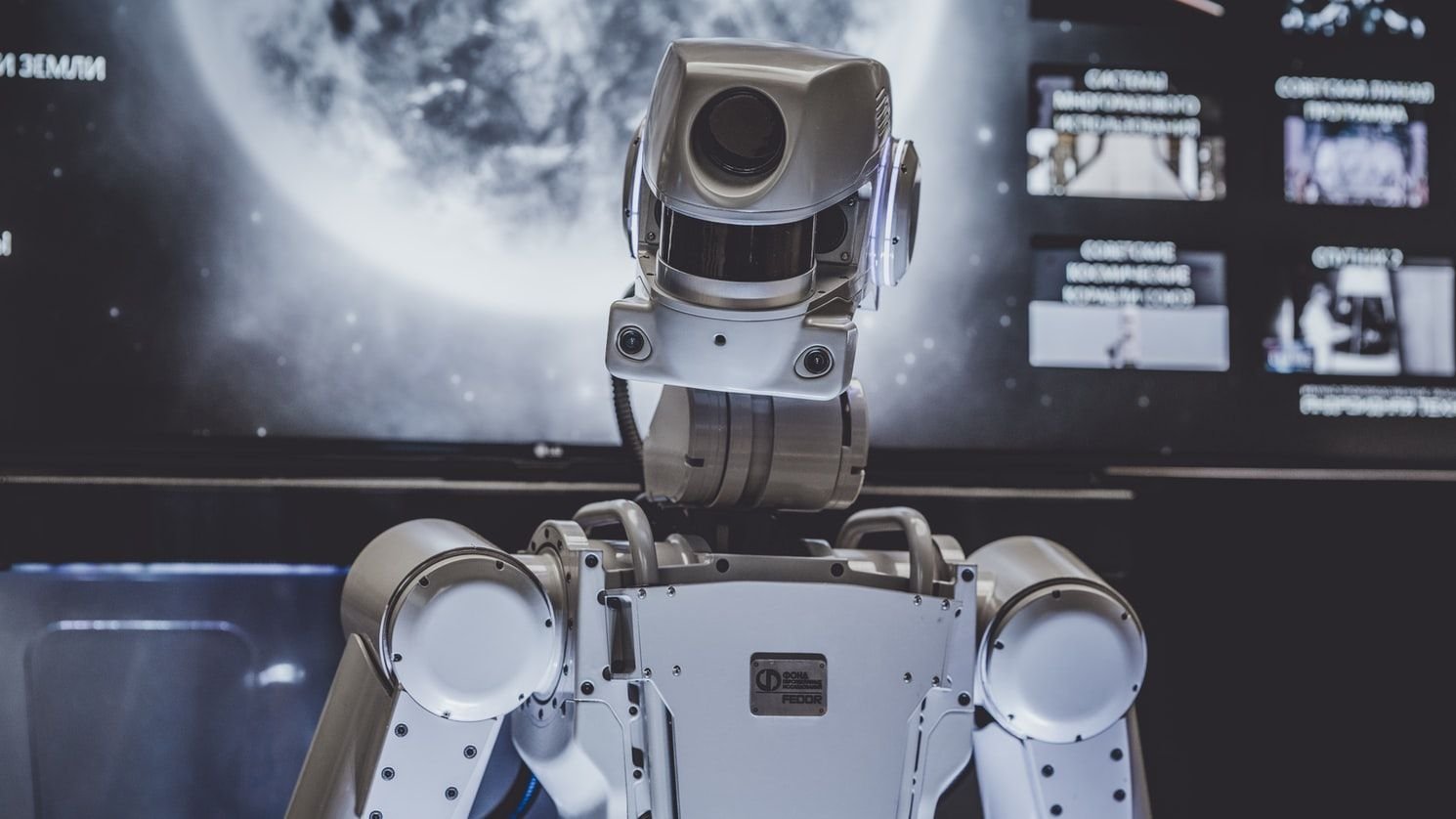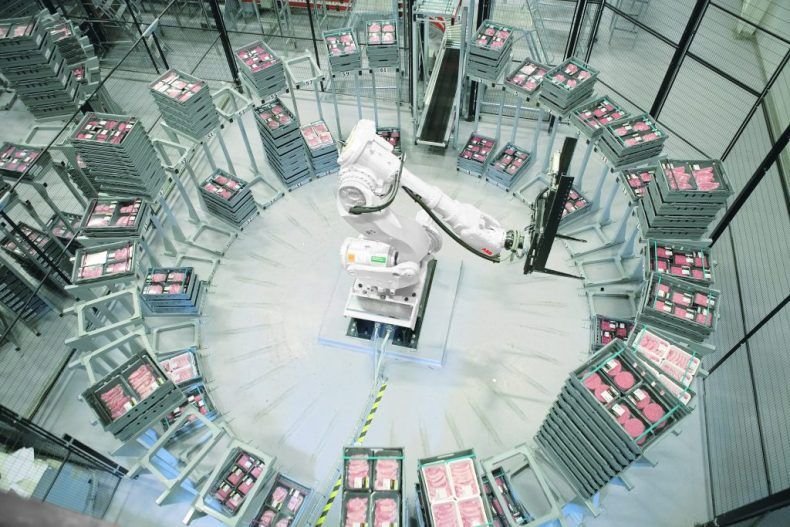What is a robot?
The English Oxford Dictionary defines a robot as “A machine capable of carrying out a complex series of actions automatically, especially one programmable by a computer.”
Although, it’s difficult to give an exact definition of what a robot is as they have many different uses and come in a vast array of shapes and sizes. As a WIRED article explains, if you ask three different roboticists to define a robot, you’ll get three different answers.
Robots today have various real-world applications and are capable of doing many things faster, more efficiently, more accurately, and more consistently compared to a human. Robots don’t have emotions, don’t get tired or suffer from fatigue, and don’t need to be paid to perform.
The history of robots
Arguably, the first phrase “robot” was coined by the Czechoslovakian term for “work”, during a science fiction play, premiered in 1921 composed by Karel Capek. This play first introduced robots being created in a factory as mass-produced slaves. However, thorough research suggests that the idea of robotics was formulated much earlier than this time.
The very first recorded idea and production of a robot was during the 4th century BC by the acclaimed Greek mathematician, Archytas. This documentation details the creation of a wooden bird that was mechanically conducted by a pivot bar. Interestingly, this invention was not only labelled the first robot ever known but also the first-ever time that a scientist tackled to explain how birds actually fly. From this point on, Archytas was classified as the “father of mechanical engineering.”

The evolution of modern robotics began in 1943 when science fiction author, Isaac Azimov stated three laws on how a robot must behave. The laws are as followed.
Must not injure a human through physical interaction or allowing a human to be harmed.
Must obey all commands set by a human, unless this collides with the first law.
Must protect their own survival, as long as this does not conflict with both the first and second law.
These laws have continued to stick as technologies have advanced, as robots and human begin to work together efficiently over the centuries. An example of this is within factories, such as a traditional car factory, where human beings were able to promptly construct a car, with the help of a conveyor belt and machinery helping with all heavy lifting aspects.

How robots change the world
The use of robots is only increasing and their applications are becoming more varied every year. The rate at which robots are learning is becoming faster due to accelerated advances in automation, engineering, artificial intelligence, and machine learning.
In Oxford Economics report they predict robotics will displace about 20 million manufacturing jobs globally by 2030, and that we can expect to see as many as 20 million robots by 2030, with 14 million in China alone. This will mean higher productivity and bigger growth overall for companies but it’s unclear what direct impact this will have on the economy, the workplace, and society due to the cheaper cost an improved efficiency.
CNBC reports that if robot installations were boosted to 30% more than the baseline forecast by 2030, researchers estimate it would lead to a 5.3% boost in global GDP for that year alone.
Robots now not only operate on car manufacturing or assembly lines but have applications in a wide range of industries which are listed below to give you an idea of how robots are changing the world we live in today. Some of the industries robots are working within are:
- Agriculture
- Assistive technology
- Exoskeletons
- Exploration and navigation
- Search and rescue operations
- Warehouse logistics
There are robots that are going further than just doing repetitive tasks or autonomous work such as Asimo by Honda, Aibo by Sony, and the popular Sophia by Hanson Robotics who is the world’s first robot citizen, done world tours, and been granted the first robot visa to show off her capabilities thanks to AI and machine learning.
An analysis of industrial robotics
Before considering whether to incorporate robotics into your manufacturing, both advantages and disadvantages should be looked at to understand how they can be of assistance to your business and if they would be worth the investment.
Advantages:
Efficiency growth
As programmed, robots are able to complete tasks quicker and in a more precise manner than humans. As industrial robots are less likely to get exhausted over periods of time, this can speed up manufacturing on the production line by being able to work for longer and create shorter cycle times, as a result.
Increased profitability
Inevitably from a top-level point of view, with an increased amount of products being produced, a larger amount of capital can be generated. However, as manufacturing robots especially can be instructed to strategically cause less wastage and implement quality assurance procedures.
Uniqueness
By acquiring new industrial robotic machinery, this can definitely be an interesting feature to announce. This can help your business stand out amongst competitors who have not purchased this cutting edge technology and can help to sell your unique business proposition.

Disadvantages:
Upfront capital
Robotics are particularly expensive to purchase initially, whilst also needing expert programming for the robot to suit the precise procedures of the business. Manufacturing robots also require ongoing costs, in the event of the robot having a malfunction, or needs the programming needs to be updated to meet new process procedures.
Thorough expertise
In order to understand and work the industrial robotics, the business’ employees will also need training, which unavoidably takes time and capital to fully grasp. By thoroughly training employees initially to understand operating the manufacturing robots, this is likely to work as an advantage in the long-term of the manufacturing process as a whole.
Identifying needs
It should be recognised that by simply purchasing a manufacturing robot, this does not assure an increase results. The product being manufactured must be able to be made with automation and still meet their aligned business goals.
How can businesses incorporate industrial robots?
After looking at how robots change the world, it’s clear to see they definitely have their advantages and are not going anywhere soon with the demand for them only increasing across the world. With automation creating a big pathway to the future, it’s imperative a business fully understands the costs and training that will be needed for a business to get the full use out of a robot.
If a business chooses to integrate robotics into their business, they should carefully recognise that thorough training should be provided on both the robots use and for the health and safety for having one on site. This will aid in a straightforward integration into the business, and should also be adaptable to different procedures.
About L-A-C Logistics Automation
Who we are: Founded in 1997, L-A-C Logistics Automation are a leading UK supplier who’ve been successfully supplying conveyor systems, belt conveyors, roller conveyors, automation, and robotic solutions to the UK’s blue-chip industry. Located in Bulwell, Nottingham, L-A-C are known for their outstanding customer service, continual support, flexibility, and bespoke service. With a full in-house service team, and an engineering team who’ve worked together over 25 years, L-A-C covers all aspects of control system design, build and associated software, and ongoing support.
What we do: L-A-C has a wealth of experience supplying conveyor systems and robotic solutions to a range of industries including automotive, aerospace, food and beverage, heavy engineering, and logistics. L-A-C design, assemble, incorporate testing, and deliver with training and after-sales support for a smooth handover. With an in-house mechanical design team, project managers, and engineers, all the builds are undertaken on the five-unit 70,000 sq. ft premises.


